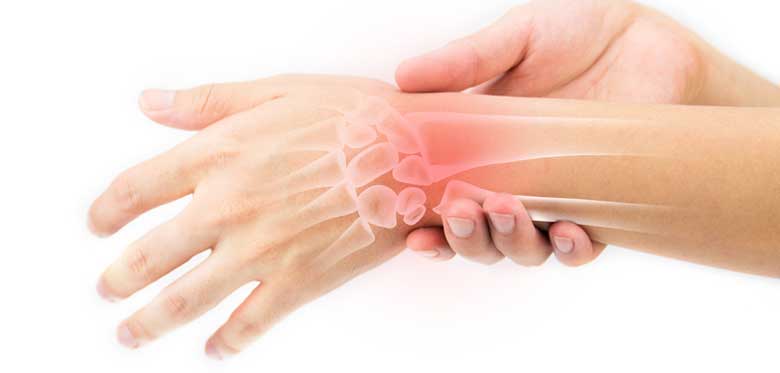A small broken bone in the wrist, or more specifically a scaphoid fracture, is one of the most common injuries suffered by men and women of all ages.
Yet despite its popularity this treatable injury is also the most likely to be missed or is misdiagnosed in one in 30 cases according to leading national law firm Stephensons.
Caused by falling onto an outstretched hand, a scaphoid fracture occurs when the small bone at the base of the thumb is broken – if left untreated it can lead to long-term problems like arthritis.
Common amongst sportspeople including rugby and football players and older people prone to falls, the injury can strike anyone who falls onto their hand. It is particularly common in winter due to poor weather conditions resulting in an increased number of falls.
Tenderness and swelling along the side of the thumb and increased pain when gripping are good indications that the scaphoid is fractured.
“Yet, despite its prevalence it’s one of the most common injuries to be misdiagnosed or missed by a doctor,” states Claire Stockley, a partner in the clinical negligence department at Stephensons.
“People often assume they’ve simply sprained their wrist as there’s no physical deformity but any delay in diagnosis can lead to long term problems.”
Here Claire highlights the top three steps to take if you think you might have suffered this injury:
Tell the nurse or doctor examining you precisely how you fell, if you can demonstrate how you landed with your other hand then show them.
They should take a full history of the mechanism of your fall, specific details about your symptoms and ask if you fell on an outstretched hand but a common mistake is not asking leading to an incorrect diagnosis of just a sprain.You should undergo a physical examination of the area on the back of your hand near to the base of your thumb – this is referred to as the anatomical snuff box. Point out the exact area where you’re experiencing pain and tenderness.
Another mistake is not carrying out the correct examination in this area especially if you’re experiencing pain and swelling in the wrist area.If a scaphoid fracture is suspected you should be sent for an x-ray. It often doesn’t show up on the first x-ray so you may be asked to return for a second x-ray in two weeks’ time. If a fracture has been excluded and you’re still experiencing pain and discomfort after 10 days, return to the minor injury unit or speak to your GP even if you’ve not been advised to return for a follow up.
Sometimes, the fracture is visible on x-rays but missed by the doctor or radiographer, or a follow up x-ray is not offered after 14 days. A failure to ask for the specific type of x-ray to identify the fracture is very common with the person reassured they’ve not suffered a fracture. This usually leads to lengthy delays in correct diagnosis and a worse outcome.
If the bones are broken but still in line it can usually be treated in a cast worn for 6-12 weeks. But if the bones have moved out-of-line surgery may be needed to fix the bone in place with a small screw.
Claire said: “If diagnosis is delayed the fracture either takes longer to heal or fails to heal at all. This can mean wearing a cast for months or surgery to realign and stabilise the fracture. In severe cases a bone graft may be needed causing scarring and pain to another part of the body. There is also an increased risk of arthritis.
She added: “If diagnosis for a scaphoid fracture has been delayed or missed a person may be entitled to compensation for additional pain caused by the delay and for pain or scaring from any avoidable surgery.
“Claims, which need to be made within three years of the injury when medical treatment was first sought, can also be made for loss of earnings if a person has been unable to work. Similarly claims can be made for any care and assistance needed to help with things around the house, plus any future treatment or equipment needed to improve a person’s functionality.”
If you think you may have suffered a scaphoid fracture that was either missed or diagnosed late then seek legal advice from a specialist team of clinical negligence solicitors who are experienced in dealing with claims in this area.


